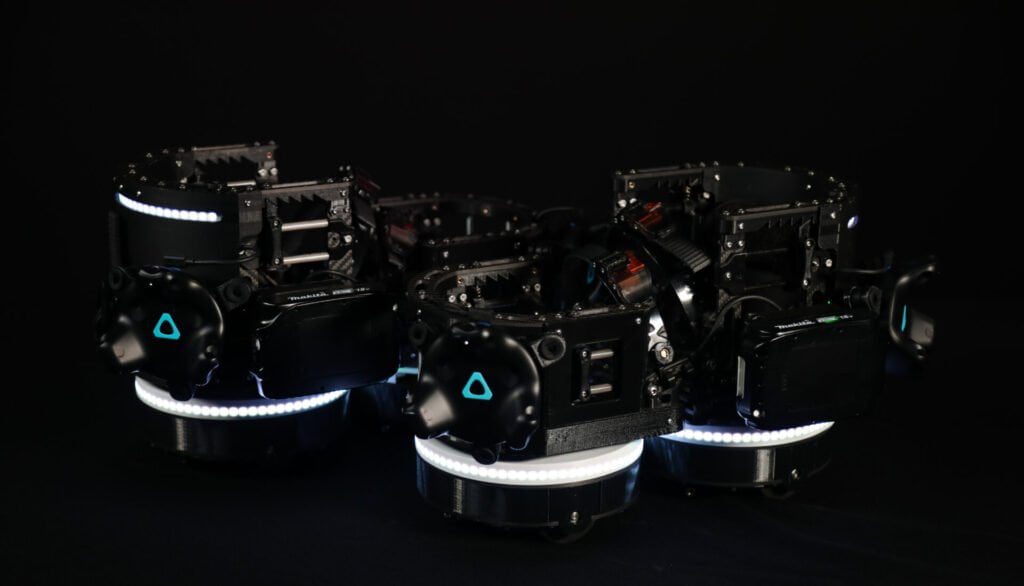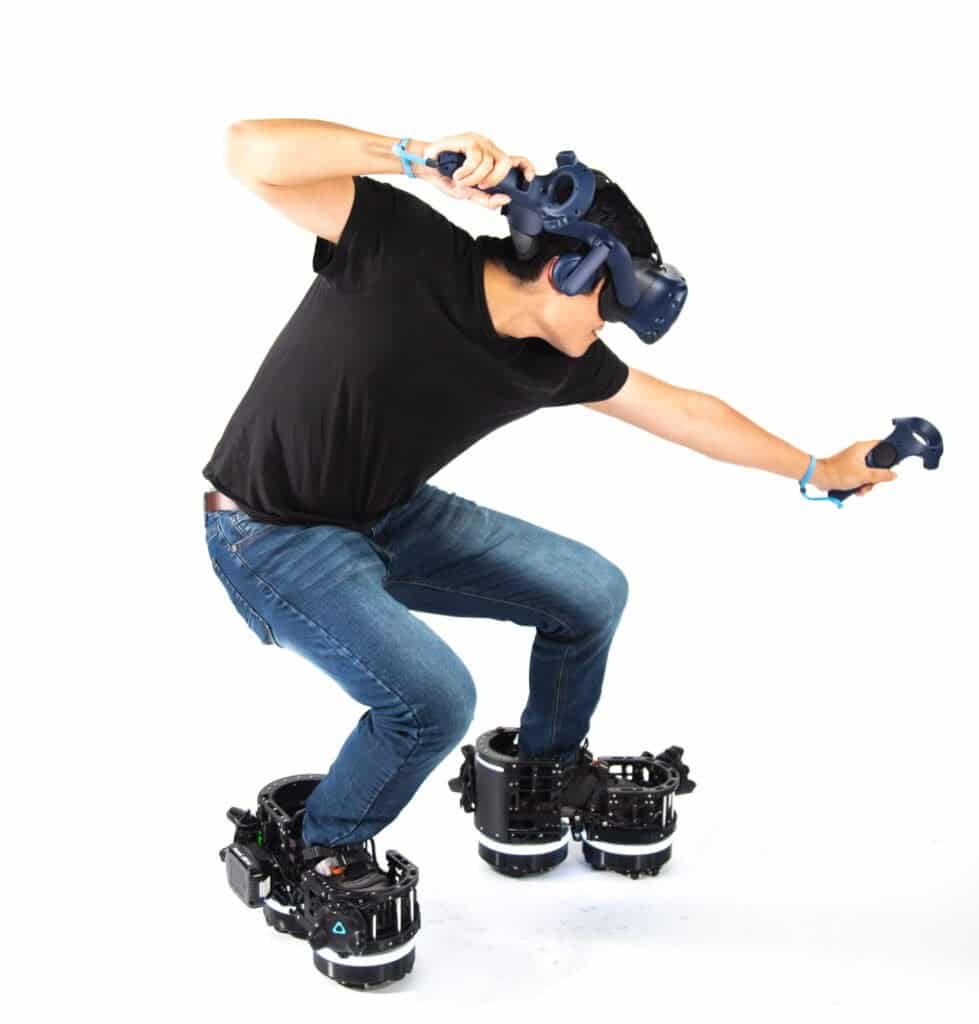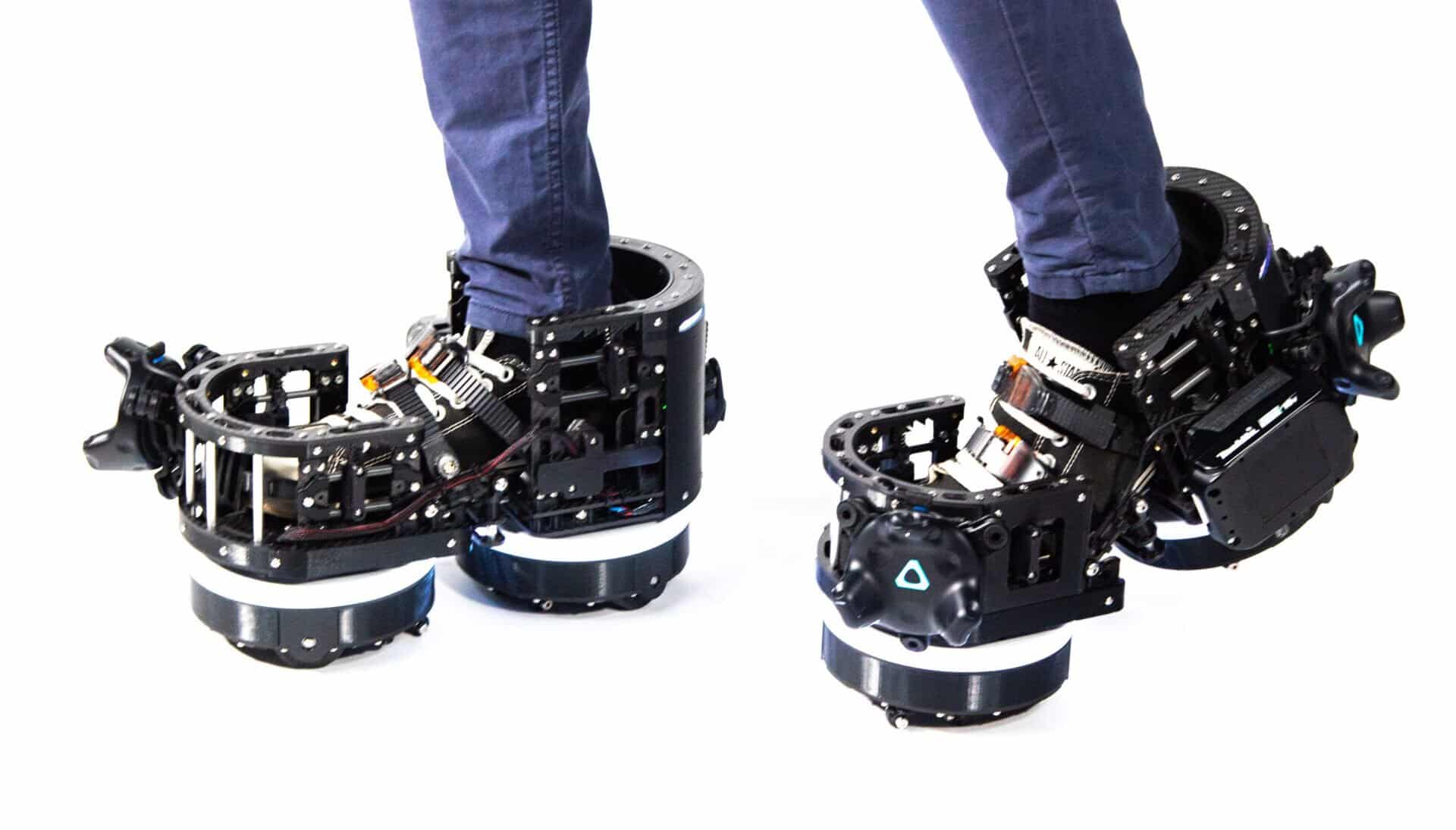EktoVR he believes he has solved the problem of locomotion in virtual reality environments.
The company just unveiled its first product: it's called Ekto One. It's a pair of robotic boots that the company says can hold you in place as you walk forward. Come on, we know that it is almost impossible to simulate walking on the spot or standing on a VR treadmill. These boots take another approach to walking in VR - check out this demo.
How Ekto One works

The robotic boots use a lightweight carbon fiber design and use HTC's Vive Tracker discs to track movements in VR. On the bottom of the device there are two rotating plates that can rotate in the direction the user is walking. Once you put your foot on the ground to start walking in VR, a set of wheels pulls your leg back as you walk forward, presumably giving the sensation of walking, but keeping you in place. When you are stationary, special brakes prevent you from slipping like on a pair of skates.
I haven't tried the Ekto One myself, but as with any new VR technology safety is one of my main concerns. In a briefing earlier this month, Ekto CEO Brad Factor ensured that the system has undergone rigorous testing to ensure safety and stability. It also doesn't support running yet, which isn't surprising given the potential risks. First walk in VR, then run: right? Future iterations may allow this.
Robotic Boots Considerations
It's certainly an intriguing design and could be a potential avenue to make VR locomotion a lot more immersive than it is right now. But Ekto One is only designed to walk in VR inside corporate apps. Suppose an engineer wants to visit a skyscraper before it is built. Or an interior designer admiring the already furnished environment before doing it live. Things like that.

It seems to me, in its current form, a bit large and complex, I think also expensive, for mass consumption. Factor notes that the current model is "cost-effective" for enterprise solutions, but says Ekto VR is interested in consumer applications in future applications, hoping to achieve this within two to four years.


